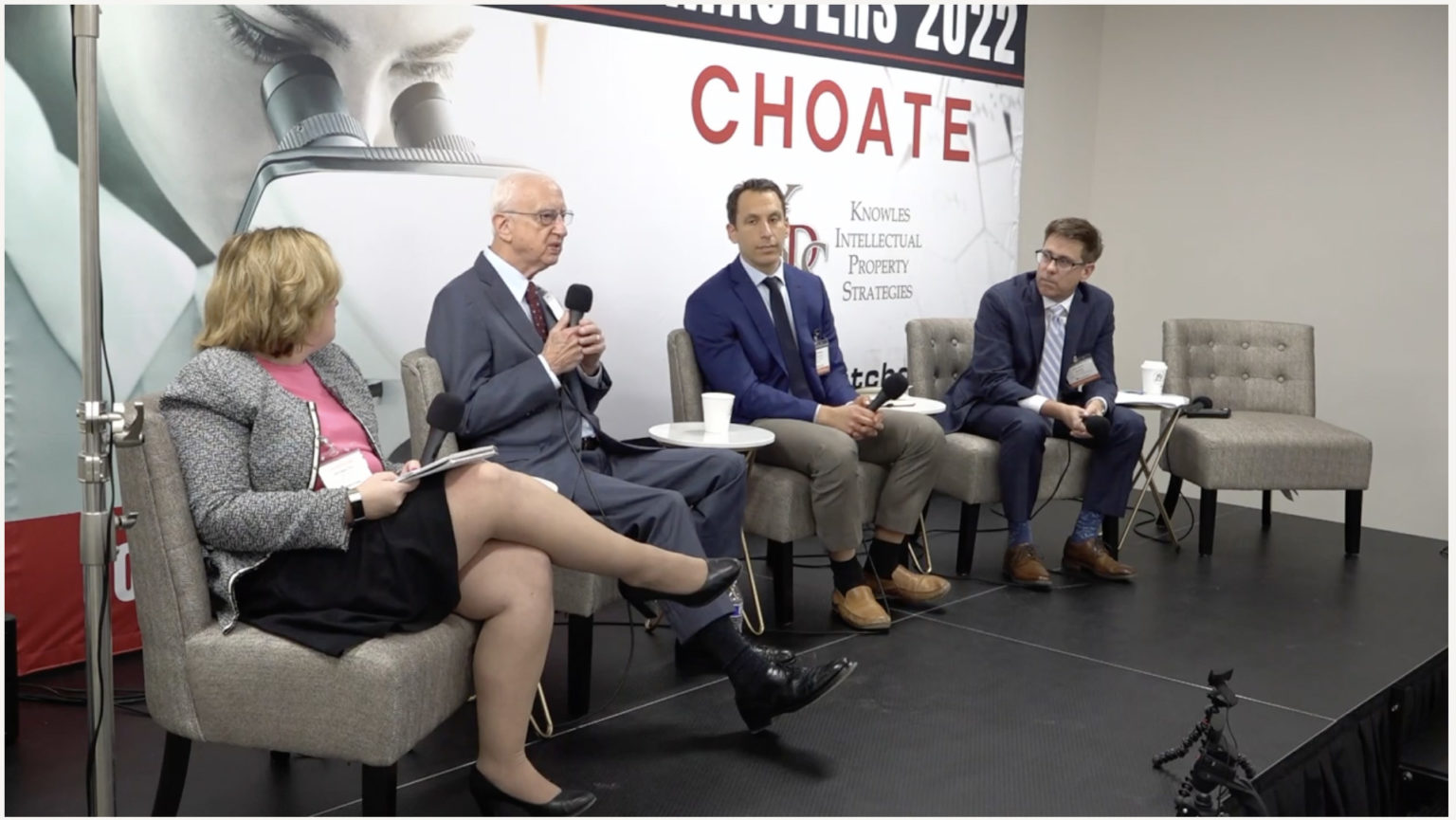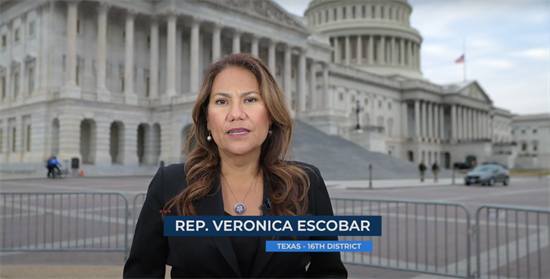Patent Eligibility and the Life Sciences Industry– The Impact of Law on Innovation in the Industry
“While overly-broad and inadequately disclosed claims should be disallowed, certain ‘discoveries’ are patent-worthy.”
From left: Laura Smalley, Judge Paul Michel, Mike Cottler and Thomas Stoll.
One of the panels at last year’s IPWatchdog’s Life Sciences MastersTM Series addressed the thorny problem of patent eligibility. I moderated the panel, titled Patent Eligibility and the Life Sciences Industry–What Next?, where the speakers, with input from passionate audience members, discussed the impact of section 101 jurisprudence on innovation in the life sciences industry. Do the limits on what is patent-eligible subject matter created by the courts strike the proper balance or do unpredictable court decisions harm investment and research in the life sciences?
While the majority view appeared to be that patent-eligibility reform is necessary, both to provide clarity and to incentivize certain type of inventions, the panel also expressed the idea that some form of section 101 jurisprudence is necessary to prevent “discoveries” from being monopolized, which could also harm innovation.
Discoveries Should Be Patentable
My view is that there is nothing inherently wrong with patenting “discoveries.” Many “discoveries” are extremely innovative and beneficial to society. While overly-broad and inadequately disclosed claims should be disallowed, certain “discoveries” are patent-worthy. Yet, as the Supreme Court has stated, “Groundbreaking, innovative, or even brilliant discovery does not by itself satisfy the § 101 inquiry.” Ass’n for Molecular Pathology v. Myriad Genetics, Inc., 569 U.S. 576, 591 (2013). Following Myriad and other Supreme Court decisions, however, the Federal Circuit has felt constrained to hold what have been characterized as “breakthrough invention[s]” to be patent-ineligible. See, e.g., Ariosa Diagnostics, Inc. v. Sequenom, Inc., 788 F.3d 1371, 1381 (Fed. Cir. 2015). In Ariosa, claims directed to the application of a ground-breaking discovery—that maternal plasma contained cell-free fetal DNA—were held patent ineligible because they were directed to a “natural phenomenon” to which “routine, conventional steps” were appended. Id. at 1378. The claims were invalidated even though the Federal Circuit agreed that the invention “revolutionized prenatal care,” id. at 1379, and Judge Linn, concurring, noted that the claimed methods were “groundbreaking,” resulting in the first commercially-available “non-invasive prenatal diagnostic test for fetal aneuploidies.” Id. at 1381.
Even if we accept that claims directed to natural principles or phenomena are “discoveries” rather than “inventions,” why should such “discoveries” be denied patent protection? Article I, Section 8, Clause 8 of the U.S. Constitution permits Congress to give inventors exclusive rights (patents) to their “Discoveries.” Section 101 does not specifically exclude “discoveries” or contain any exceptions to subject matter eligibility. In fact, the statute specifically contemplates patents on discoveries. 35 U.S.C § 101 (“Whoever invents or discovers any new and useful process . .”). . Yet, it would seem that discoveries (whether of natural principles or natural laws) are not patentable under current jurisprudence. Discovering, and then reducing these principles or phenomena to practice, requires just as much (and in many instances much more) research, innovation, and effort than inventions that fall within the definition of patent-eligible subject matter. . As Federal Circuit dissenters have noted, “an inventive concept can come not just from creative, unconventional application of a natural law, but also from the creativity and novelty of the discovery of the law itself.” Ariosa Diagnostics, Inc. v. Sequenom, Inc., 809 F.3d 1282, 1289 (Fed. Cir. 2015) (dissent).
An Assertion Based on Anecdotal Evidence
The concern expressed in regard to patenting claims that are seen as directed to natural laws or natural principles is that patent law should not inhibit discovery by preventing the use of the basic building blocks of technology—abstract ideas, naturally occurring phenomena, and natural laws. Mayo Collaborative Servs. v. Prometheus Labs., Inc., 566 U.S. 66, 86 (2012). This concern, however, is often recited by the Supreme Court and other courts without evidentiary support. And, even where evidence is cited, reasonable minds can differ. For example, while some stakeholders have asserted that prohibitions on patenting naturally-occurring DNA has “catalyzed research and health innovation,” see Comment PTO-P-2021-00320054, many stakeholders have expressed contrary views. . In addition, while patents on naturally-occurring DNA have been cited as harmful to innovation, there is little evidence that patenting “discoveries” would harm innovation in other areas. In fact, as detailed by former Chief Judge of the Federal Circuit, Paul Michel, there is ample evidence that lack of reliable patent protection in key areas of technology has decreased investment and commercialization in these areas. For example, promising diagnostics for lupus, Alzheimer’s, metastatic cancer, schizophrenia and other conditions were not commercialized due to the chilling effect of subject-matter eligibility jurisprudence on the life sciences. .
The assertion that patents inhibit basic research tends to be based on anecdotal evidence. Empirical studies show that “basic” researchers tend to ignore patent infringement and that patent owners do not enforce their patents in this context. See Christopher M. Holman, The Critical Role of Patents in the Development, Commercialization, and Utilization of Innovative Genetic Diagnostic Tests, Center for the Protection of Intellectual Property at 4 (July 2014) (hereinafter “Critical Role”). Even if that concern were valid, the argument ignores discoveries never made, research never undertaken, or commercialization never completed in the absence of the incentives provided by the patent system. Many “discoveries” require substantial investment—as of 2013, it was estimated that a diagnostic method could cost anywhere from $20 million to over $100 to commercialize. See Dolginow et al., Mystery Solved! What is the Cost to Develop and Launch a Diagnostic?” Jan. 15, 2013. It is easier to point to proof of the harm that allegedly flows from patents, such as the effect of having a single provider on the market prices, but how is the lack of an available treatment quantified? Is that cost taken into account in the section 101 analysis?
The benefit of research and techniques made public through the patent system may, on balance, outweigh any alleged damper on research or excess cost caused by patenting a “discovery.” While certain categories of “discoveries,” such as naturally-occurring DNA, should be excluded from patent protection, a broad court-made rule that bars protection for most “discoveries,” particularly in the life sciences, is not warranted. In the past, judges of the Federal Circuit have suggested that sufficiently narrow claims to what one would call a “discovery” should be patentable after the discovery has been reduced to practice. See Ariosa Diagnostics, Inc. v. Sequenom, Inc., 809 F.3d 1282, 1291 (Fed. Cir. 2015) (Judge Dyk, concurring) (“[I]f the breadth of the claim is sufficiently limited to a specific application of the new law of nature discovered by the patent applicant and reduced to practice, I think that the novelty of the discovery should be enough to supply the necessary inventive concept.”)
Discoveries are Difficult and Expensive to Develop
Generally, practical applications of a “discovery” are much more difficult to develop than simply identifying the natural principle. For example, while basic research may identify a gene associated with a genetic disease, additional research is “required to discern and validate the clinical significance of genetic variations,” which requires expensive-long term studies. See Critical Role at 6. For example, after the BRCA genes were discovered, Myriad (and others) needed to distinguish the clinically-significant variations from those that were not clinically-significant. Then, the likelihood of developing cancer for patients with the clinically-significant variations needed to be quantified and validated. Id. Myriad Genetics represented in patent litigation as of 2013 that it had “invested over $500 million to implement this discovery and create a molecular diagnostic test for hereditary breast and ovarian cancer related to the BRCA1 and BRCA2 genes.” See Complaint, Univ. of Utah Research Found. v. Quest Diagnostics, Inc., No. 13-0967, Document No. 2 at 4 (D. Utah Oct. 22, 2013). Sequenom announced its new non-invasive prenatal assay, called the Harmony Prenatal test, in 2012, reporting the results of three clinical studies and the launch of a large scale-clinical trial involving over 25,000 women. See Declaration of Mohan Rao, Aria Diagnostics v. Sequenom, No. 3:11-cv-063931-SI, Document No. 38 at 3 (N.D. Cal. March 8, 2012). Up to the launch of the test, Sequenom estimated that its research and development costs and other pre-launch expenses were “on the order of $70 million.” Id. at 13. The ongoing launch was expected to cost over $70 million in 2012. Id.
In some instances, the discovery itself is difficult. The current antimicrobial resistance crisis, which has caused the “unchecked spread of resistant pathogens” stems from the dwindling antibiotic discovery pipeline. See Lewis, K. The Science of Antibiotic discovery. Cell 181, 29–45 (2020). . Antibiotics, however, “are the most difficult types of drugs to discover, but some of the easiest to develop.” Id. at 41. Many antibiotics, including new compounds in the current pipelines, are natural products or modified natural products. Id. at 31-32. In response to a request for comments related to subject-matter eligibility (81 Fed. Reg. 71485 [October 17, 2016]), the Houston Intellectual Property Law Association noted the effect of section 101 on claims to teixobactin, a promising new antibiotic isolated from soil bacteria. Claims to isolated teixobactin were rejected by the USPTO under Myriad. While the applicant eventually obtained a patent to teixobactin “plus a pharmaceutically acceptable carrier that efficiently solubilizes the compound” (U.S. Pat. No. 9,402,878) and methods of using teixobactin (U.S. Pat. 9,163,065), such claims might be invalid under the current test for subject matter eligibility, as noted by the Association, given that the carriers are “routine and conventional.” The novelty is in the discovery of the natural compound, which as been described as “uniquely difficult.” See Ling, L., Schneider, T., Peoples, A. et al. “A new antibiotic kills pathogens without detectable resistance.” Nature 517, 455–459 (2015). Given that “discoveries” – including natural products and natural laws – often require just as much work to reduce to a practical application as an “invention,” the broad judicial exceptions crafted by the courts are unwarranted. To a certain extent “all inventions… embody, use, reflect, rest upon, or apply laws of nature, natural phenomena, or abstract ideas.” Alice Corp. v. CLS Bank Int’l, 573 U.S. 208, 217 (2014). Patentability of a claim directed to a natural law, natural product or abstract idea should not necessarily depend on whether other claim limitations are novel or instead “routine and conventional.” An uncultured organism in soil bacteria is not useful or truly known until it is isolated, grown and screened. A correlation between a biomarker and a disease state needs to be discovered and then validated. .
The judicial exceptions to patentability should be narrowed so that applications of natural laws, natural products, and abstract ideas “to a new and useful end” are “eligible for patent protection.” Alice, at 217.






